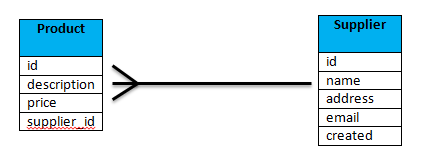Hello doctrine lovers,
Well come back. In my previous post, we discussed how to map one-to-one relationships. If you have not read it but want to make yourself aware of one-to-one relationship mapping in Doctrine using YAML, make sure you read it before reading this post. So, today I am going to show you how to map many-to-one relationships in both unidirectional and bidirectional ways using Doctrine 2. As you are aware by now I will be using YAML instead of PHP annotations or XML. It is simply because YAML is very easy to understand (though you need to stick with proper indentation, which is not a big deal), will not run into unexpected problems, such as pre-compilers/caching engines tend to ignore comments, which will be used in annotations and few other things. By the way, in Symfony 2, you can use either YAML, Annotations or XML as part of the Doctrine configuration, but use one, not all. Symfony 2 evaluates all these methods equally. At the end of this post, you will learn a technique to evaluate your mapping whether it’s correct or not. So make sure you don’t miss anything in this post.
So back to the topic. Let’s have a quick look at what’s many-to-one relationship is all about. In simple terms, many-to-one is many rows of a table can be relate with only one row of another table. Take a look at the image below,
So basically, what this tells is, one supplier can have more than one product. For an in instance supplier ‘acer’ can have more than one products such as aspire e1 series laptops, e2 series laptops and so on.
Unidirectional – Many to One
In Unidirectional many-to-one mapping, you will only point to the target table from the parent table (same as in the one-to-one example in my previous post). I call ‘product‘ table as the owning side (parent table) and ‘supplier‘ table as the target table. The reason why I declare parent table to be the owning side is below, Continue reading

